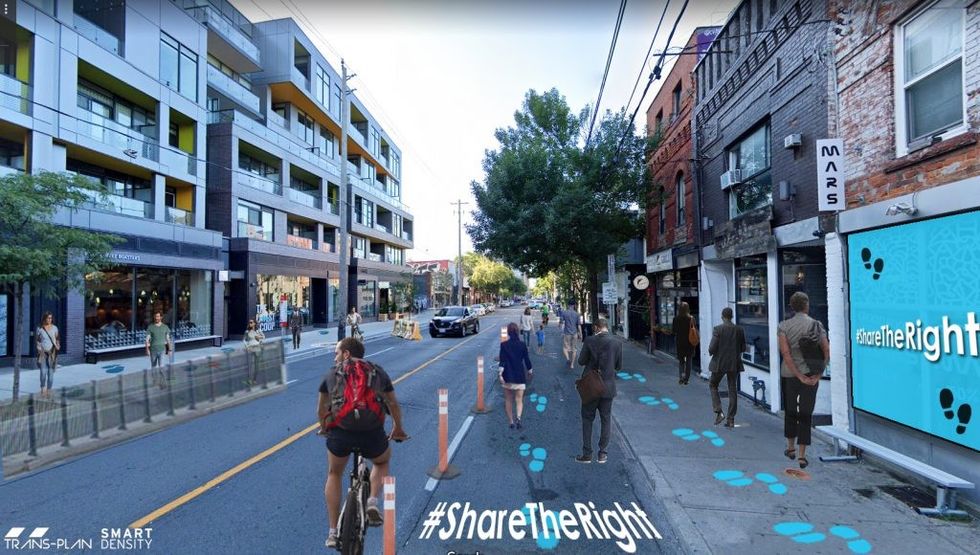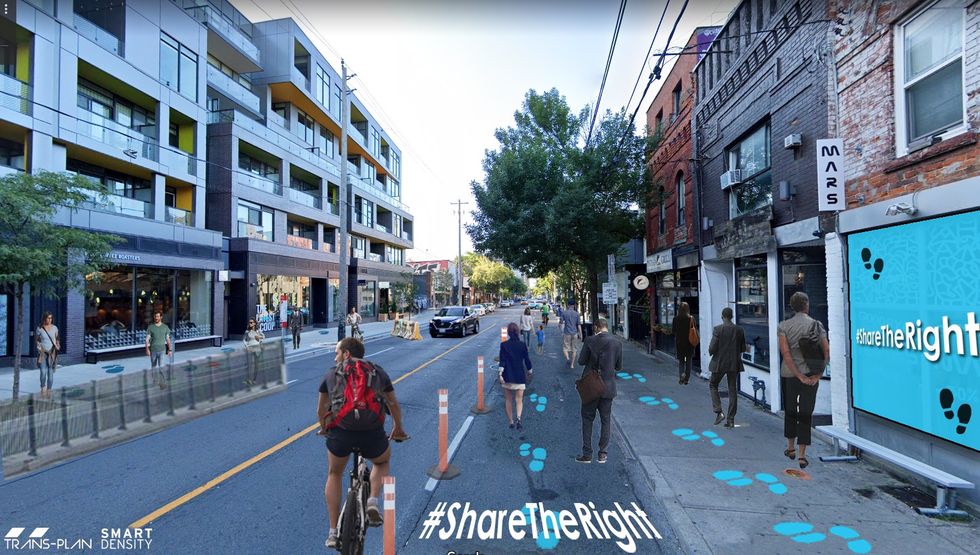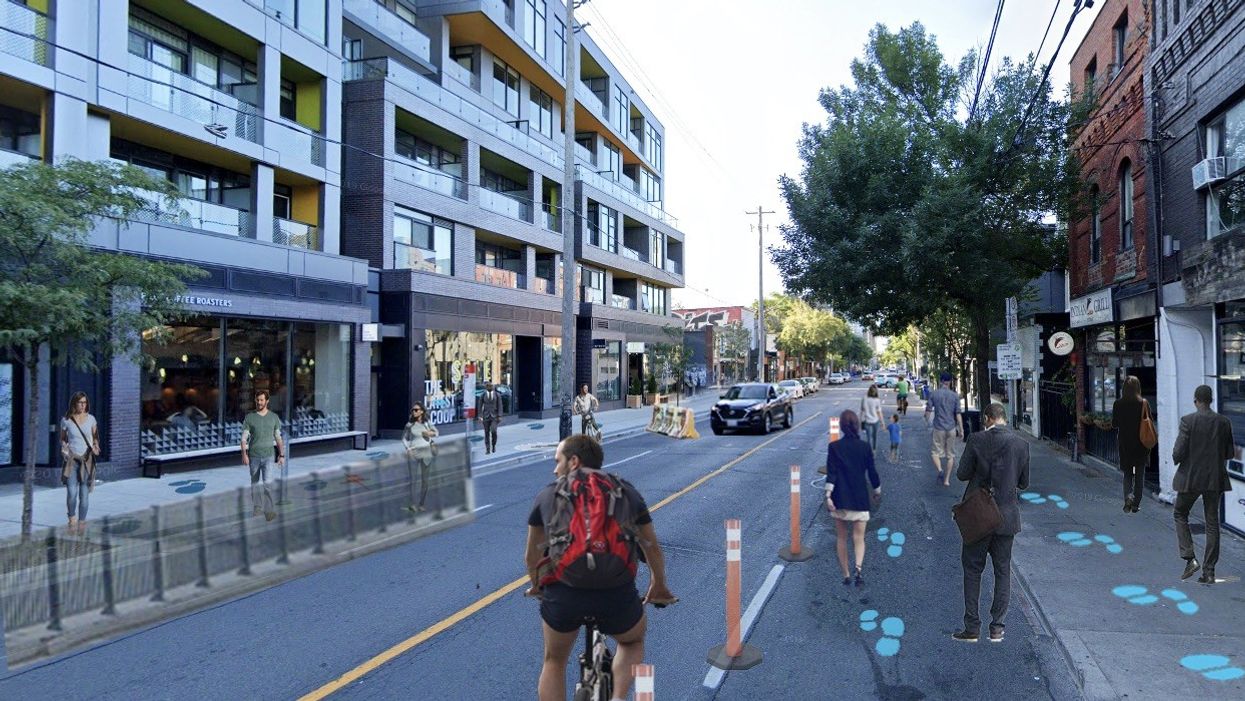A temporary plan called #ShareTheRight is being proposed as an urban solution to move people and vehicles safely on city streets during COVID-19.
While some have called for one-way sidewalks and even closing city streets, a solution is possible that requires no major new infrastructure and is easily implementable.
READ: The Data-Driven Case for Closing Lanes in Downtown Toronto During COVID-19
#ShareTheRight was collaboratively developed by transportation engineers (Trans-Plan) and urban planners (Smart Density), to take advantage of diverse expertise and consideration of all stakeholders.
“We’re traffic engineers, so we have the bird’s eye view of how things move,” said Trans-Plan CEO Shadi Hagag. “Big improvements can be made easily.”

During the emergency, roads are still used: by essential businesses, drivers, transit vehicles, pedestrians and bicyclists. And still physical distancing is crucial.
According to Naama Blonder, Partner at Smart Density, “#ShareTheRight is a way for us to take a fresh approach and reimagine how our streets and public realm could be adjusted.” It keeps movement to the right-hand side, and shares that lane and pavement in new ways.
- Pedestrians: Pedestrians move in one-way direction, limiting cross-over and helping keep the distance between people. Indoors, aisles inside essential businesses are major arteries, so one-way walking mitigates the risk of movement in limited space.
- Road lanes: Our traffic has slowed dramatically, and city streets no longer hold an abundance of cars. By looking at the roads as dynamic and yielding a lane for pedestrians, transit stops, and deliveries, we can increase the area designated for pedestrians.
- Essential business entry: Grocery stores, pharmacies and LCBO lines are common. By properly designating a portion of the sidewalk for safe lineups, we further mitigate the risk of our necessary movements.
- Shared Lane: With the decrease in traffic and vehicular movement we look to cars, transit, and cyclists to share a lane.

Our city streets are foundational to the connectivity of Toronto. By adjusting key functional components of our streets, we respond to the new pressures due to physical distancing and limited movement, and also, we further mitigate the risk associated with necessary movements.
This story was submitted by Smart Density, an architecture and urban design firm in Toronto.





















